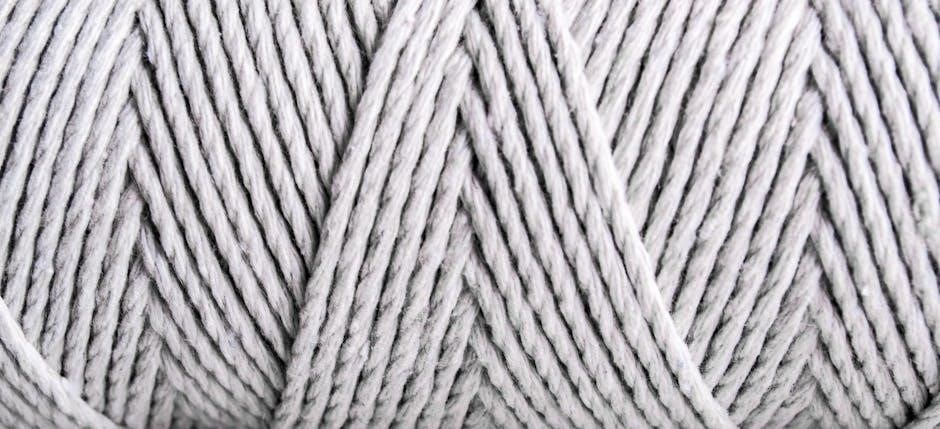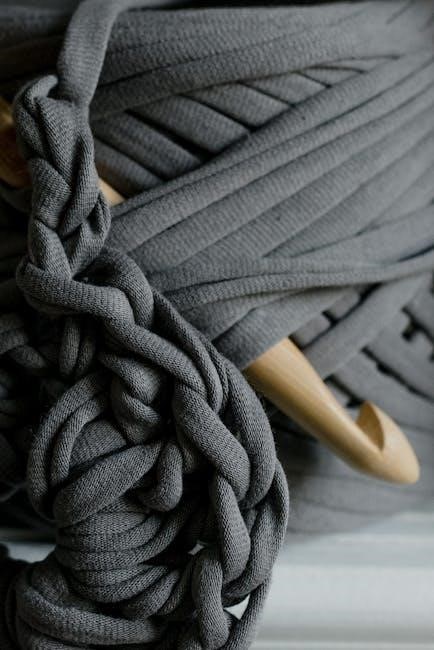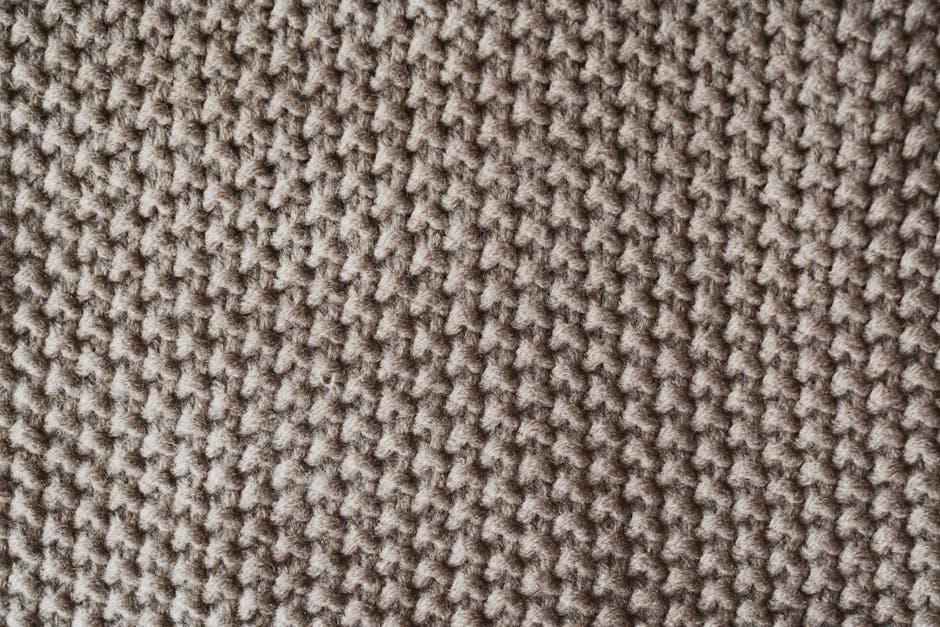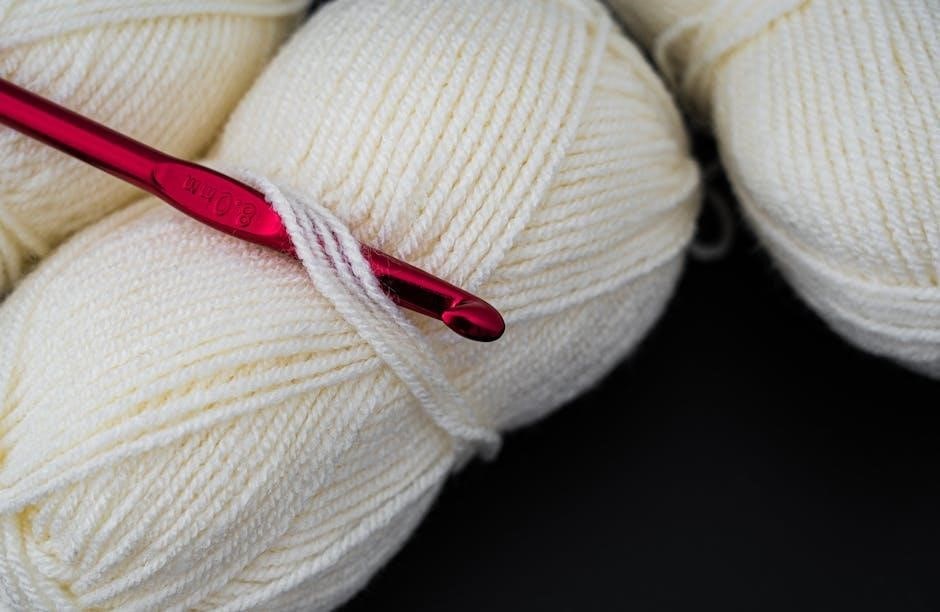Finding Free Crochet Patterns in PDF Format
Discovering free crochet patterns in PDF format is easier than ever! Many blogs and websites offer downloadable PDFs. These often include detailed instructions, charts, and photos for easy crocheting. Explore options for all skill levels!
Sources for Free Crochet Patterns
Finding free crochet patterns in PDF form can be an exciting treasure hunt! Several online resources offer a wide variety of options for crocheters of all skill levels. Popular crafting websites like Ravelry often host designers who share their patterns for free, sometimes as downloadable PDFs. Many individual crochet bloggers also provide free patterns on their sites, frequently in PDF format for easy printing and offline use. Yarn manufacturer websites, such as Lion Brand Yarn, often feature collections of free patterns, including PDF versions. Social media platforms, particularly Facebook groups dedicated to crochet, can be a great place to discover patterns shared by other crocheters. Don’t forget to check out websites and blogs dedicated to amigurumi; they frequently offer charming patterns in PDF format. Finally, explore online crochet communities and forums, where members often share their own designs and links to free resources, expanding your pattern library. Remember to always respect the designer’s copyright when using free patterns.

Understanding Crochet Pattern PDFs
Crochet pattern PDFs are invaluable tools for crocheters. They provide a structured guide to creating a project. Familiarizing yourself with their common elements ensures a smoother and more successful crocheting experience.
Advantages of Using PDF Patterns
PDF crochet patterns offer several advantages for crocheters of all skill levels. Primarily, they provide a convenient and easily accessible format for storing and using patterns. Unlike online patterns, PDFs can be downloaded and saved for offline use, making them perfect for crocheting on the go or in areas with limited internet access.
Furthermore, PDF patterns often include detailed instructions, clear charts, and helpful photographs, ensuring a smoother and more enjoyable crocheting experience. These visual aids can be especially beneficial for complex patterns or intricate stitchwork. The print-friendly nature of PDFs also allows crocheters to print out specific sections or pages, making it easier to follow the pattern while working on their project. This is really useful for the user.
Many designers offer expanded versions of free patterns as paid PDFs. These often come with additional sizing options, modification instructions, and designer support.
Elements Typically Included in a Crochet Pattern PDF
A well-structured crochet pattern PDF typically encompasses several key elements to guide crocheters through the project. Firstly, it includes a comprehensive list of materials required, such as yarn type, hook size, and any additional notions. Gauge information is usually provided to ensure accurate sizing and finished measurements.
The pattern will then detail the stitches used, often with abbreviations and explanations for less common stitches. Step-by-step instructions are provided for each row or round, accompanied by helpful diagrams or photographs to illustrate complex techniques. Many PDFs also include sizing adjustments, schematics, and finishing instructions.
Furthermore, some designers incorporate charts to visually represent stitch patterns, while others offer video tutorials to supplement the written instructions. The overall goal is to present the information in a clear, concise, and easily understandable manner, enabling crocheters of all skill levels to successfully complete the project.

Types of Crochet Projects Available as PDF Patterns
A vast array of crochet projects are available as PDF patterns. These include everything from small amigurumi toys to intricate blankets, stylish garments, and useful home décor items, catering to diverse interests.
Amigurumi Patterns
Amigurumi patterns, often found in convenient PDF format, are exceptionally popular among crocheters. These patterns guide you through creating adorable, small stuffed toys and characters. From cute animals to whimsical creatures, the possibilities are endless.
PDF amigurumi patterns frequently include detailed step-by-step instructions, accompanied by helpful photos and diagrams. These visual aids are invaluable for beginners and experienced crocheters alike, ensuring a smooth and enjoyable crafting experience.
The PDF format allows for easy printing and portability, enabling you to crochet on the go. You can easily access the pattern on your tablet or phone, or print it out for offline use. Many designers offer free amigurumi patterns in PDF form, allowing you to explore this delightful craft without any cost.
With a wide variety of designs available, amigurumi projects offer a fun and rewarding way to use your crochet skills and create charming handmade gifts.
Garment Patterns
Crochet garment patterns in PDF format offer a fantastic way to create your own unique and stylish clothing. These patterns range from simple tops and sweaters to more complex dresses and cardigans, catering to various skill levels and preferences. The PDF format provides convenience and portability, allowing you to access the pattern on any device or print it out for easy reference;
A well-written crochet garment pattern PDF typically includes detailed instructions, sizing information, and stitch diagrams. They often include schematics showing the garment’s dimensions, which is crucial for achieving a perfect fit. Many designers also offer video tutorials to guide you through more challenging techniques.
Whether you’re looking to crochet a cozy winter sweater or a breezy summer top, PDF garment patterns provide the resources needed to bring your creative visions to life. With a vast selection of designs available online, you can find the perfect pattern to match your personal style and wardrobe.

Blanket and Afghan Patterns
Crochet blanket and afghan patterns in PDF are abundant, offering a diverse range of styles and techniques for creating cozy and beautiful home décor. These patterns cater to all skill levels, from beginner-friendly granny squares to more intricate designs involving cables and textured stitches. The PDF format provides a convenient way to access and print the patterns for on-the-go crocheting.
A comprehensive blanket or afghan pattern PDF will include detailed instructions, stitch diagrams, and color charts. They often specify the yarn weight, hook size, and finished dimensions of the project. Many designers include tips for customizing the size and color scheme to suit your preferences.
Whether you’re looking to create a classic baby blanket, a modern geometric afghan, or a colorful granny square throw, PDF patterns offer the resources needed to bring your vision to life. With a vast selection of patterns available, you can find the perfect design to add warmth and style to any room.

Tips for Working with Crochet Pattern PDFs
Working with crochet pattern PDFs can be efficient with organization and understanding of the abbreviations. Adjustments for size and yarn weight can further personalize your projects. These tips will improve your crocheting experience.
Printing and Organizing Patterns
Printing crochet pattern PDFs allows for convenient, hands-on access while you work on your project. Consider printing only the relevant pages to save paper and ink. Use a three-hole punch to store the printed pages in a binder for easy organization and retrieval. Alternatively, you can use sheet protectors to keep the pages clean and prevent wear and tear.
For digital organization, create folders on your computer or cloud storage to categorize patterns by type, designer, or project. Rename the PDF files with descriptive names, including the pattern name and designer, to make searching easier. Consider using a pattern management app or software to track your projects, yarn stash, and hook sizes.
Highlight or annotate printed patterns with notes and modifications as you work. Keep a small notebook nearby to jot down any changes you make or specific details about your project. This will be helpful if you decide to make the pattern again in the future. With good organization, you’ll have instant access to patterns!
Understanding Crochet Abbreviations
Crochet patterns often use abbreviations to simplify instructions. Mastering these abbreviations is crucial for successfully completing projects. Common abbreviations include “sc” for single crochet, “dc” for double crochet, “ch” for chain, and “sl st” for slip stitch. Pay close attention to the pattern’s abbreviation key or glossary, usually found at the beginning of the PDF.
Some patterns may use more advanced or less common abbreviations. Online resources, such as crochet dictionaries and tutorials, can help decipher unfamiliar terms. Keep a reference guide handy while you work, either printed or digital. Practice reading and understanding abbreviations by working on simpler patterns before tackling more complex projects.
Consistency in abbreviations can vary slightly between designers. Always refer to the specific pattern’s key for accurate interpretation. If unsure, search online or ask for clarification from fellow crocheters in online forums or groups; Deciphering abbreviations will unlock a world of intricate crochet designs!
Adjusting Patterns for Size and Yarn Weight
Crochet patterns are often designed for specific sizes and yarn weights, but adjustments are possible. To adjust for size, consider crocheting a gauge swatch using your chosen yarn and hook. Compare your gauge to the pattern’s gauge. If your gauge differs, adjust your hook size accordingly. You may also need to adjust the number of stitches or rows to achieve the desired dimensions;
When substituting yarn weight, be mindful of the fabric’s drape and texture. A heavier yarn will create a denser fabric, while a lighter yarn will result in a more open weave. Adjust the hook size to match the yarn weight and achieve the desired gauge. Remember to recalculate yarn requirements based on your adjusted gauge and project size.
Smaller projects like amigurumi are more forgiving when substituting yarn. Larger projects like garments require careful planning and calculations to ensure a proper fit. Consider consulting online resources or seeking advice from experienced crocheters for complex adjustments. Be patient and make small adjustments, checking your progress regularly.

Leave a Reply
You must be logged in to post a comment.